

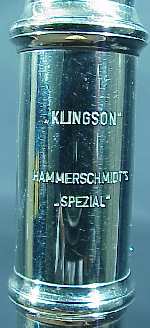 |
"Klingson" Hammerschmidt's "Spezial"
|
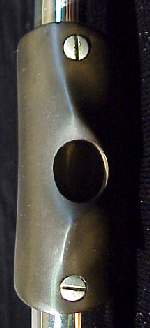 |
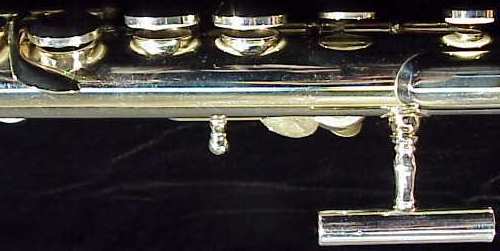
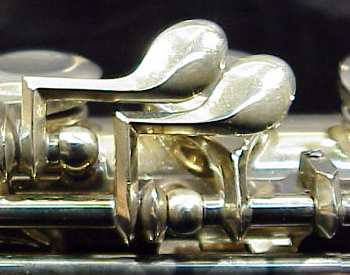
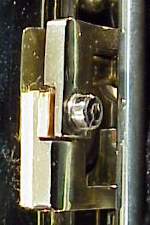 The back connector has an oversize cylindrical adjuster housing boldly superimposed on what is otherwise a study in rectangles. |
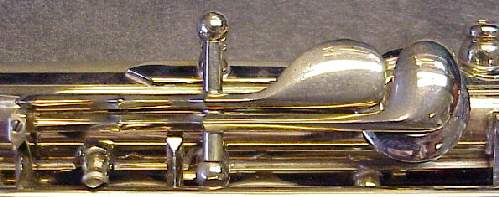 The
less ostentatious adjusters are much more delicately placed, as is this
Bb adjuster of the left thumb cluster. Notice also the elongated
steel to reduce lateral movement of the pad cup as the mechanism wears. The
less ostentatious adjusters are much more delicately placed, as is this
Bb adjuster of the left thumb cluster. Notice also the elongated
steel to reduce lateral movement of the pad cup as the mechanism wears. |
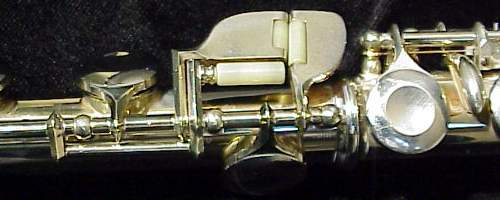 In
a final concession to human frailty, the footjoint adds ebonite rollers
to the D# and C# keys.
In
a final concession to human frailty, the footjoint adds ebonite rollers
to the D# and C# keys.
The wide oval of the ebonite embouchure and heavy walled body give the flute a dark, almost wooden sound, with the thinner wall thickness of the head helping to bring out the upper harmonics when called for.
This flute was found in a music shop near
Chicago
when a college student was hired to do inventory, no one remembers when
it arrived. The finish looked atrocious, corks, pads and felts were
shot,
and a pivot screw was missing -- I never dreamed it would clean up into
such an attractive, responsive and just plain fun instrument.
(Thanks
again to Jim Gleason at Old World Music for the overhaul!)
Images © J.
W. Sallenger